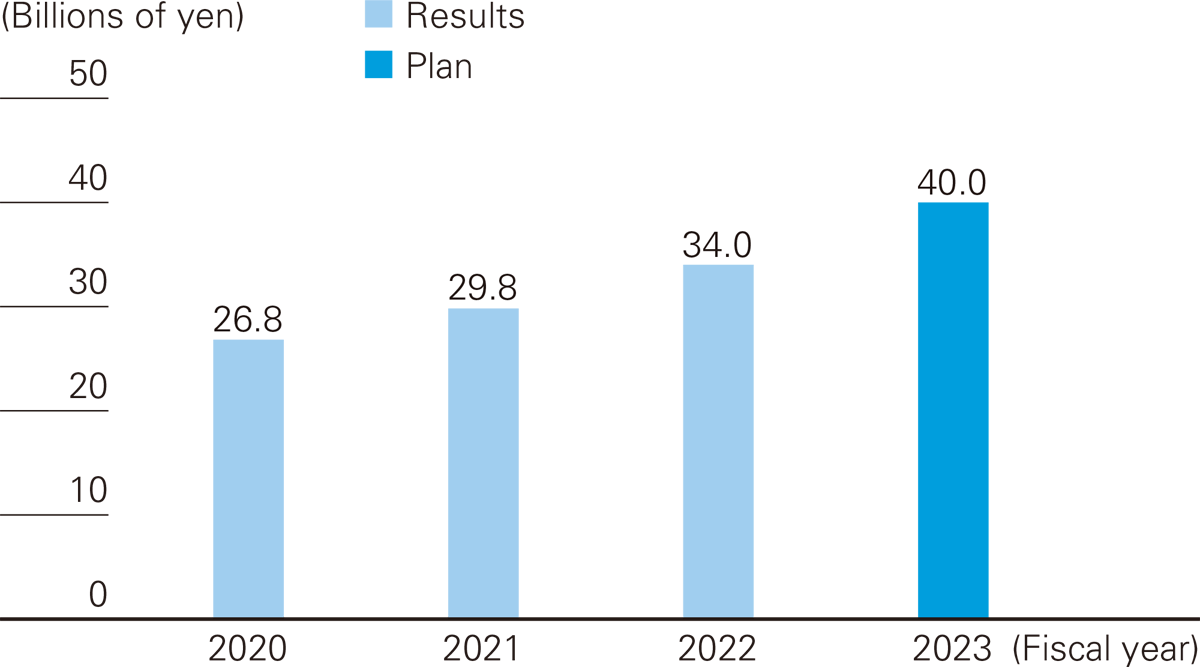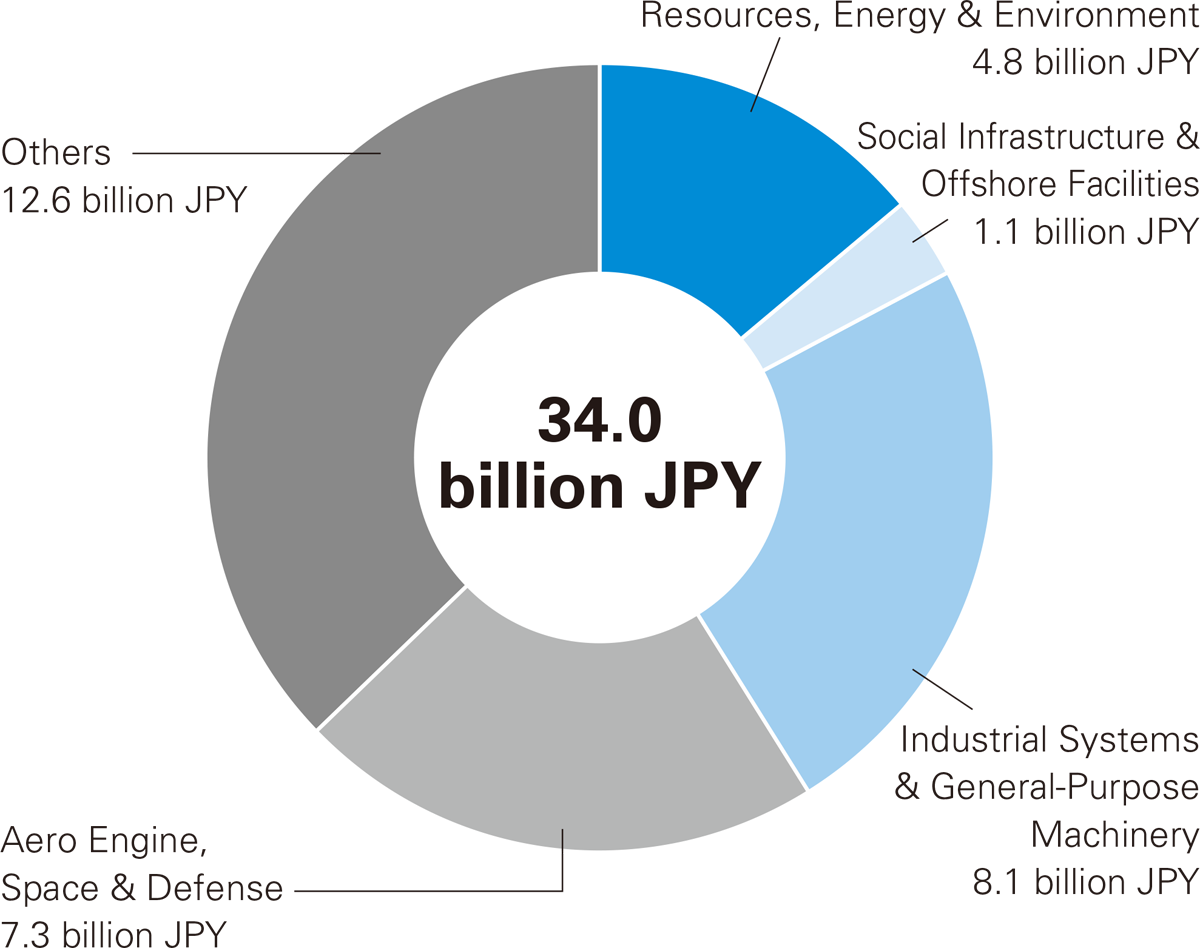Changes Regarding Research and Development Expenses

Change
Location
Currently Using The English Site.
Regional HQ’s Websites
Other
The IHI Group aims to create a world where nature and technology work in unity, and has undertaken the challenge of developing technology that continuously provides new value by envisioning a variation of future possible solutions for complex social issues and cultivating technology in cooperation with various partners.
In proceeding with technology development, introducing model-based development has enabled us to formulate optimal development plans by identifying developmental bottlenecks and theoretical limits through a variety of simulations at an earlier stage. In addition, we conduct simulations instead of demonstration tests for scaling up development with the aim of shortening development periods and putting developed technology into practical use as soon as possible.
In order to achieve its vision for the growth, development-focus, and core businesses in the Group Management Policies 2023, the IHI Group concentrates research funds and human resources on the fields of these businesses to conduct technology development.
In the fields of aero engines and space, which are both our growth businesses, we are in the midst of developing technology related to the weight reduction and electrification of aircrafts and equipment as well as sustainable aviation fuel (SAF) to make aircraft eco-friendly.
In the clean energy field, which is our development-focus business, ammonia is positioned to be a sustainable fuel that does not emit CO2 when combusted. In order to stimulate its demand and build a value chain for it, we are proceeding with the development of a highly efficient ammonia-fired gas turbine. In 2022, we successfully demonstrated the world’s first CO2-free power generation (2MW class) using only liquid ammonia as fuel, thereby reducing greenhouse gases generated during combustion by 99%.
Within fields concerning resources, energy & environment, social infrastructure, and industrial systems & general-purpose machinery, which are our core businesses, we work on reducing CO2 emissions and labor as well as automation on the basis of life-cycle businesses.


Combined application of technologies is essential for the IHI Group to contribute to achieving carbon neutrality by 2050. Consequently, we are simultaneously developing a variety of technologies, including alternative fuels with no CO2 emissions, carbon recycling, and energy management systems.
During the transition period toward carbon neutrality, it is also necessary to research and develop technologies for enhancing the efficiency of existing power generation plants and for reducing CO2 emissions.
In addition, the IHI Group works to efficiently gather carbon data and convert it into an environmental value.
The IHI Group has been developing technology for using ammonia not only as an inexpensive, safe hydrogen carrier but also as a carbon-neutral fuel with no CO2 emissions during combustion. We plan to demonstrate ammonia firing at a commercial level for the first time in the world, and are steadily preparing toward this large-volume firing of fuel ammonia (20% of heating value). With our overseas partners, we are considering production of green ammonia derived from renewable energy.
The IHI Group’s biomass power generation business has received contracts to refurbish many thermal power plants into plants for single-fuel firing of biomass power generation*. We are involved in every aspect of the biomass power generation from construction to operation and maintenance and support operations optimal for providing carbon-neutral power.
Single-fuel firing of biomass power generation refers to the use of only biomass fuel in thermal power generation plants. Unlike co-firing that uses biomass fuel partially with the main fossil fuel, single-fuel firing of biomass fuel is considered to have net-zero CO2 emissions.
The IHI Group is also promoting the development of carbon capture and utilization (CCU) technologies, which include the capture of CO2 from exhaust gas of power plants or factories with the chemical absorption technique, the direct capture of CO2 from air with the direct air capture (DAC) technology and the conversion of captured CO2 into valuable products, such as methane used as fuel, lower olefin used as a raw chemical material, and SAF. We have commercialized methanation equipment, which produces combustible e-methane (synthetic methane) fuel through catalytic reaction between CO2 emitted from plants and other facilities and hydrogen. It uses an originally developed catalyst that boasts one of the longest service life spans in the world. Methanation is a key technology for carbon neutrality because it enables the utilization of existing city gas infrastructures.
The IHI Group continues to investigate and develop SAF, which will help reduce CO2 emissions from aero engines. Regarding the development of SAF synthesis technology, we are conducting joint research with the Institute of Sustainability for Chemicals, Energy and Environment (ISCE2)*. Based on the knowledge gathered during another ongoing joint development of lower olefin synthesis using CO2 as a raw material, we have developed a catalyst with high performance in SAF synthesis by efficiently exploring and adjusting test conditions such as catalyst composition and reaction conditions using machine learning, which is a type of AI. This catalyst has achieved the world’s top-level performance as an SAF synthesis catalyst that directly causes H2 and CO2 to react, recording a 26% yield of liquid hydrocarbons with five or more carbon atoms (C5+ yield), which are a raw material for SAF.
ISCE2: An affiliated research institute of the Agency for Science, Technology and Research (A*STAR) in Singapore
The IHI Group is advancing the development of numerical models and algorithms by utilizing AI technologies to optimize the configuration and operation of energy systems.
